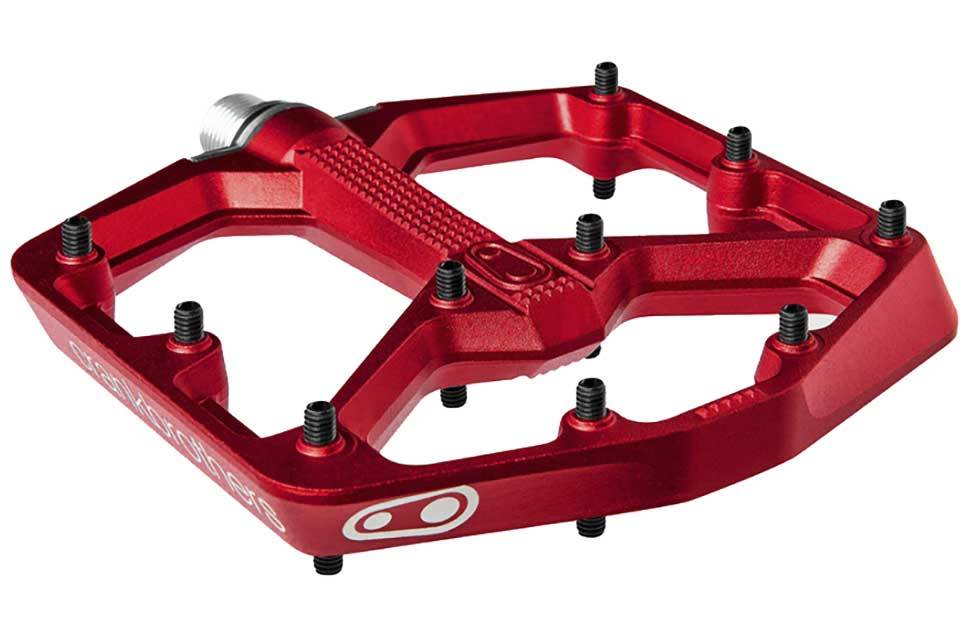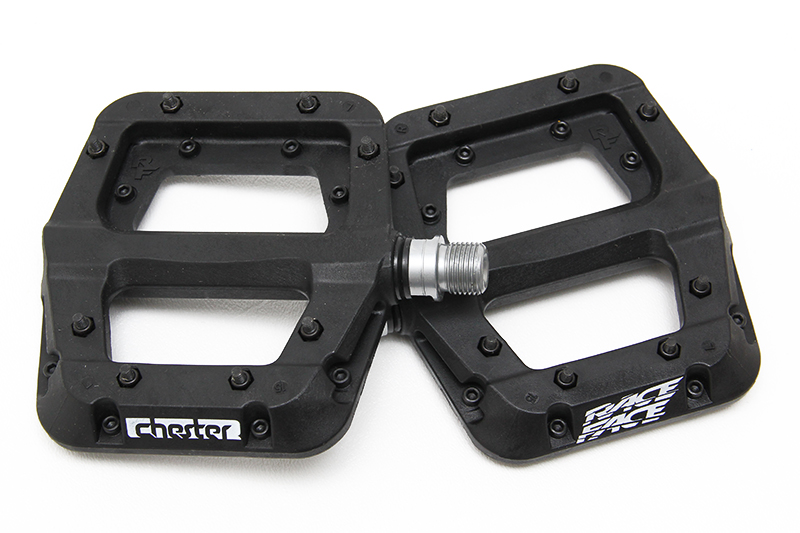
Different types of bike pedals
It may seem trivial, but choosing the right pedals for your bicycle and type of cycling is very important. Pedals are a key component trough which we transfer power to the bicycle. True, we can use any pedal to practice your chosen cycling modality, but if you truly want maximum efficiency and comfort, Then choosing the right type of pedals is a must.

Road pedals
Pedals for road cycling are typically bigger and more rigid than their mountain bikes counterparts. The goal is to get a big contact surface to ensure you loose as little power as possible. Nowadays what you should look for is a greater grip, and with it the least amount of foot movement, so you can achieve a perfect uniform pedalling.
For this reason you use a system formed by a cleat on your cycling shoes and Clip-in pedals. Cleats meant for road are big and plastic, and are usually secured by three screws. For pedals the width is very important (The thinner they are the better) and also the distance to the pedal cranks. For road pedals there are no clear standards, so lets mention the most used.
1 - LOOK pedals
The french brand was a pioneer along with Cinelli introducing the concept of ¨Automatic pedals¨ to the world of cycling. Their current standard is denominated KEO, with a triangle shaped cleat. According with the freedom of movement or buoyancy they allow to the foot there are three types:
– Black: With a lateral angle of 0 degrees they allow no lateral movement. Used by professionals.
– Gray: They are the most common with a buoyancy of 4.5 degrees.
– Red: Meant for newbies or people with injuries that may need extra movement. 9 degrees.
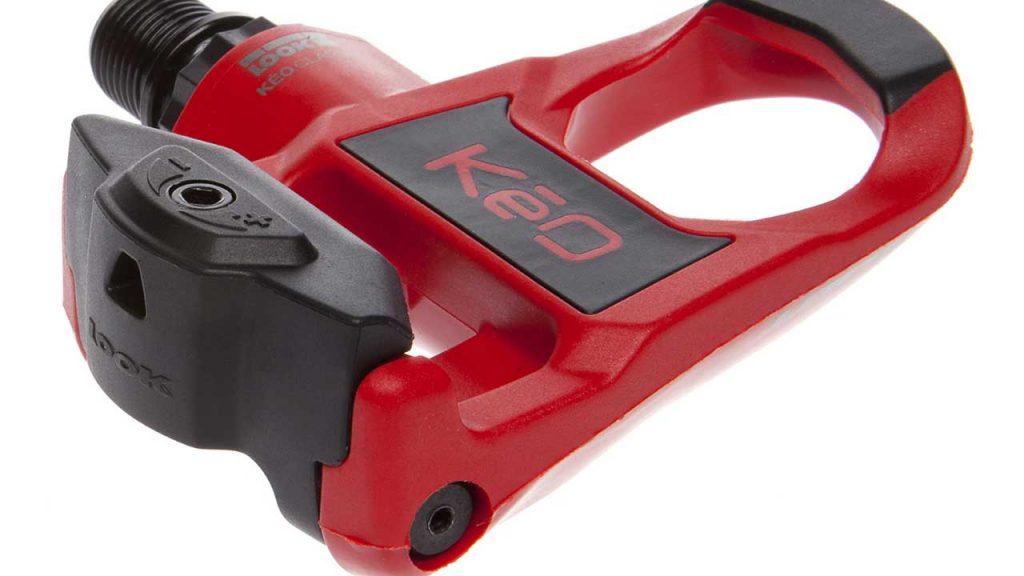

2 - Shimano pedals
Though they may look similar to their french counterparts, they are not compatible. Fabricated with a wide range of materials, weight, and bearings. From initiation models like PD-RS500, with a softer spring tension for a simpler dismount at around 50 dollars; to the high end carbon Dura-Ace PD-R9100, with a weight of 228g and just under 200 dollars.
According to the lateral movement angle, Shimano also works with three types:
– Red Cleats (SH-SM10): For professionals. With 0 degrees of lateral movement. Can cause lesions.
– Blue Cleats (SH-SM12): With a buoyancy of 2 degrees.
– Yellow Cleats (SH-SM11): The most common ones. With 6 degrees. Often come with new pedals.
3 - Speedplay pedals
Completely different to both Shimano and LOOK pedals. Shoes don’t clip-in to pedals, but the other way around, pedals clip-in to shoes. This system allows for a much greater support surface and more options to adjust. Their biggest disadvantage is their elevated price.

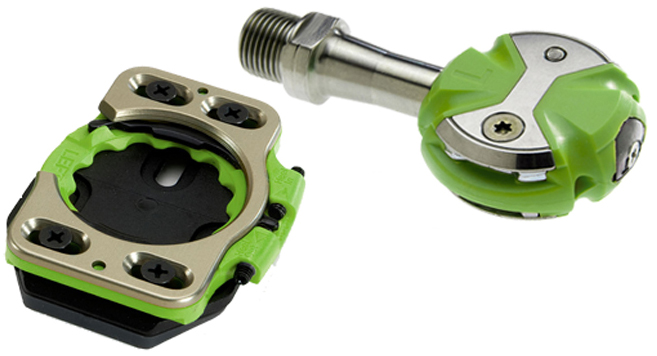
4 - Toe clips
Toe clips will definitely improve your cycling, if used correctly. (After all, pro cyclists used them for decades before clip less pedals were invented) In terms of speed increase it’s hard to say, though. It’s probably more in terms of acceleration. To correctly locate the shoe to the pedal, a proper shoe plate is required to be fitted in a precise location on the sole of the cycling shoe. The fact that the strap is tight against the foot (Shoe) renders this form of clipping to the pedal a more dangerous option. Without being able to simply release your foot by twisting the foot sideways, you need to stoop down and release the straps grip on the foot. Admittedly the proper straps are designed to be released by the simple flicking of the buckle. This is a skill that is much more significant and difficult to develop than the simple twisting of your foot the release from a modern retaining method of pedal such as an SPD or a Look design.
Another hindrance to the use of these straps is the corrosion to the spring in the securing buckle, causing release to become more difficult Remember you need to undo both pedals. A higher level for bike handling is required.
If you fell you prefer to ride in your runners or sneakers there are two newly developed options:
- Use a large flat pedal with small pins for gripping the shoe sole as in fig – 1.
- Use a toe clip designed for use without the strap.
Both of the above opinions reduce or remove the ability to pull up on the pedal.

Mountan bike pedals
Based in the same idea as read pedals. Smaller and with a system made of metal. They use 2 screws as anchor to our shoes. Everything is smaller to avoid mud accumulation. Mountain bike pedals don’t have a big support surface, however, automatic mountain bike pedals with a platform exist in some disciplines. The two most common ones are Shimano and Crankbrothers.
2 - Shimano SPD
It is today the most used mountain bike pedal system. Simple, robust, reliable, and thanks to its springs and tension screw you can set it to your taste. We can find this same system on other brands as well. There are two types:
– SPD SH51, Black. To dismount you must turn your ankle outwards. Its the most common MTB system.
– SPD SH56, Meant for initiation or urban cycling. Dismount is much easier and can be done in any direction.
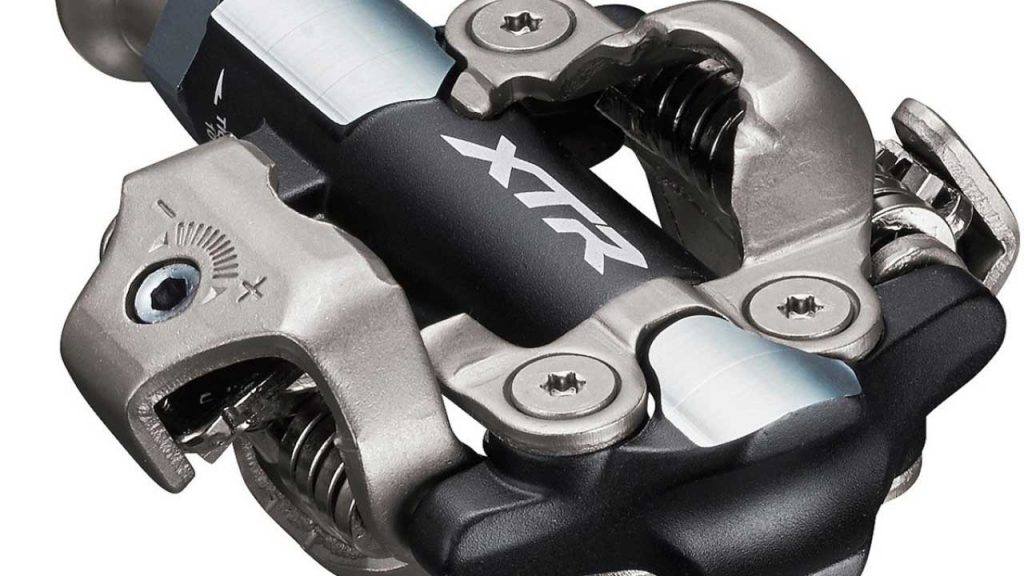

2 - Crankbrothers
With a simpler system allows for more freedom of movement. Ideal if you have an injured knee and don’t like SPD. Has four anchor points, and depending on the setup, different rotation angles will be available. As a downside, they tend to require periodic maintenance and don’t last as long as SPDs.
Platform pedals
There is no automatic adjustment mechanism. They are your everyday pedals you have known your whole live. Your shoe just sits on top of the pedal with nothing attaching them. But there are a lot of types, with varying capabilities, suited for both newbies and experienced riders. Many find the freedom and comfort they provide appealing, even if they are not the best pedals for your cycling discipline. Even dirt jumpers claim having the ability to dismount instantly helps them avoid injuries with failed stunts.
